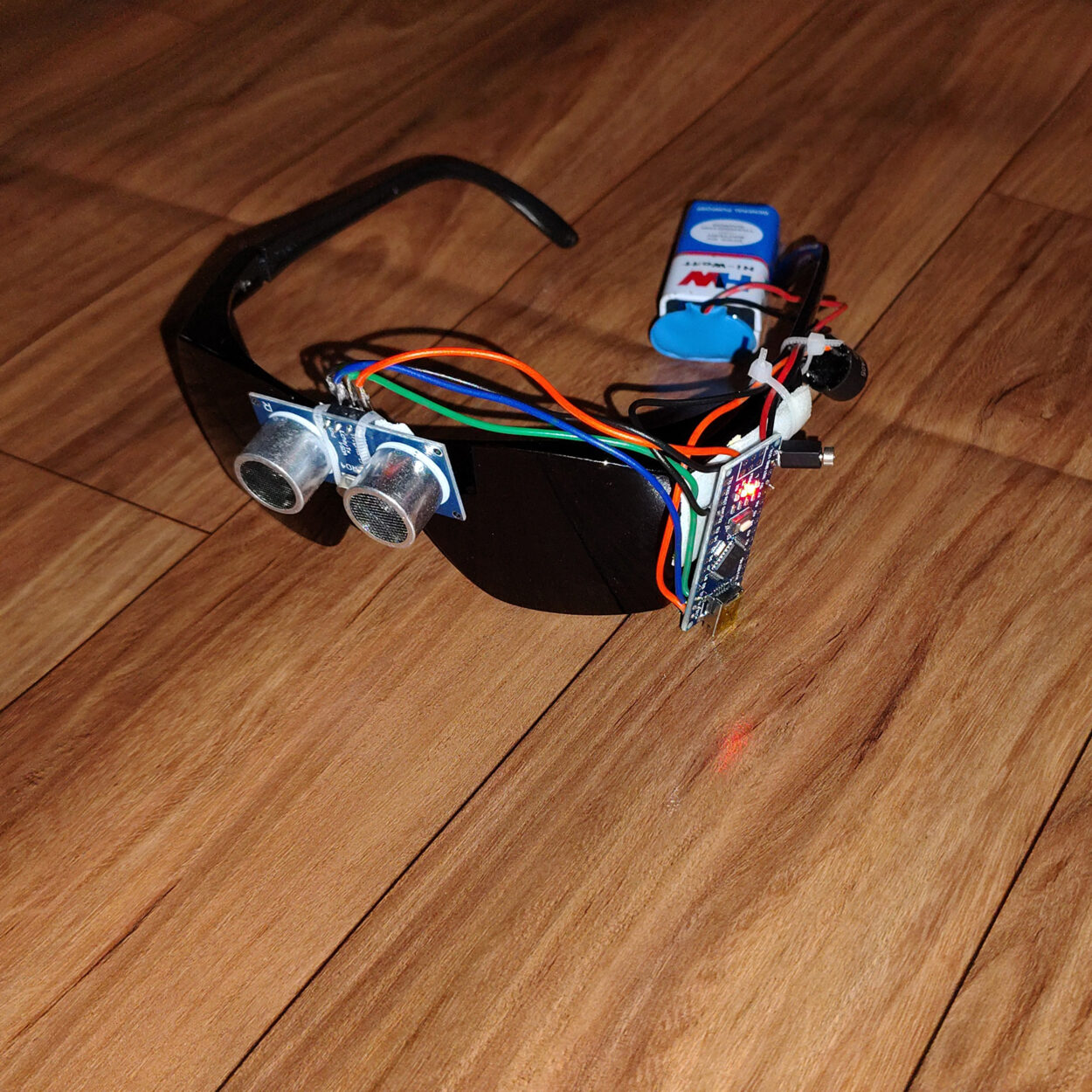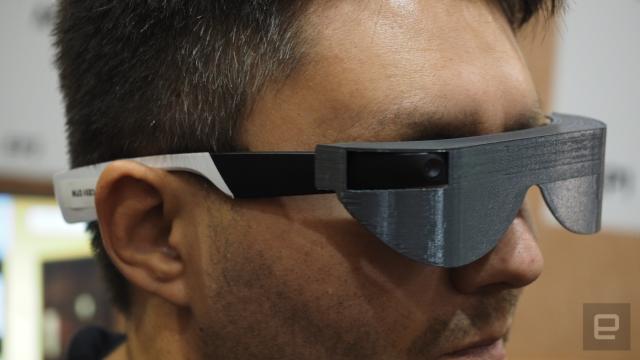The Future of Assistive Technology for the Blind: Empowering Independence
The Future of Assistive Technology for the Blind: Empowering Independence
Blog Article
Empowering Independence With Assistive Modern Technology for the Blind
The combination of assistive technology for people who are blind or aesthetically impaired represents a significant innovation in promoting self-reliance and enhancing lifestyle. With a range of tools-- from display viewers to cutting-edge tactile tools-- these technologies not only promote navigating and communication however also advertise social incorporation and engagement in different elements of life. As we discover the diverse sorts of assistive devices and their real-world applications, it comes to be clear that the impact is extensive. The development of this modern technology increases vital inquiries regarding accessibility and future developments that warrant additional exam.
Recognizing Assistive Modern Technology
Although assistive innovation has developed significantly throughout the years, its fundamental purpose remains the same: to improve the high quality of life for individuals with handicaps, particularly those that are visually impaired or blind. This modern technology includes a wide series of devices and devices that promote self-reliance and functionality in everyday tasks.
Assistive technology can be classified into high-tech and low-tech options, each created to meet certain demands. State-of-the-art gadgets typically include software application applications, specialized hardware, and flexible gadgets that utilize sophisticated modern technology to give assistance in different contexts. Alternatively, low-tech remedies might include day-to-day things that are customized to enhance availability, such as magnifiers or responsive markers.
The integration of assistive modern technology right into the lives of people who are blind or aesthetically impaired not just promotes autonomy however likewise cultivates social addition and involvement in instructional and specialist settings. By leveraging these modern technologies, customers can navigate their environments, access info, and interact properly, thereby improving their general lifestyle. Comprehending assistive innovation is essential for caregivers, professionals, and advocates who intend to support individuals in maximizing their potential and achieving better freedom.
Sorts Of Assistive Instruments
Assistive tools for the aesthetically damaged and blind are crucial tools that enhance daily living by resolving specific difficulties experienced by individuals. These gadgets can be generally classified into 3 primary kinds: optical tools, electronic tools, and sensory devices.

Sensory tools, such as Braille screens and responsive maps, supply alternative means to receive details. Braille displays transform digital text right into Braille, allowing users to review touch. Responsive maps offer spatial understanding via raised lines and appearances, enabling far better environmental awareness.
With each other, these assistive devices equip people with visual disabilities to involve more completely with their environments, promoting greater freedom and confidence in day-to-day tasks.

Effect On Every Day Life
The assimilation of assistive innovation right into the every day lives of individuals that are blind or visually impaired significantly enhances their capability to browse and connect with the world around them. Tools such as display viewers, Braille presents, and mobile applications help with access to details, permitting customers to engage with digital material, interact effectively, and manage daily tasks independently.
Additionally, innovations like wise glasses and navigating applications supply real-time help in strange settings, boosting mobility and self-confidence. These devices make it possible for customers to recognize obstacles, read indications, and even identify faces, hence fostering a feeling of freedom in public rooms. Additionally, home automation systems, which can be managed through voice commands, allow people to handle their living atmospheres a lot more successfully, improving comfort and safety.
The influence of assistive modern technology prolongs beyond practical jobs; it advertises social inclusion and emotional health. By connecting the space in between people and their surroundings, these technologies encourage individuals to participate totally in area activities, pursue educational possibilities, and engage in meaningful partnerships. Eventually, the development of assistive technology contributes in redefining the opportunities for individuals that are aesthetically impaired or blind, bring about a much more inclusive and accessible laser eye care society.
Success Stories and Reviews

An additional effective testimony originates from Mark, a recent college grad that utilized screen analysis software program throughout his academic journey. This innovation allowed him to access course materials and take part in conversations, ultimately causing his effective transition into the labor force. Mark credit scores assistive modern technology for empowering him to accomplish his occupation goals, highlighting its function in leveling the having fun area for individuals with aesthetic problems.
Additionally, area facilities have reported increased participation in their programs thanks to the introduction of easily accessible electronic systems. These systems have actually made it easier for individuals to connect, share resources, and support each other. These success stories collectively highlight the extensive effect of assistive modern technology in promoting self-reliance, improving high quality of life, and damaging down barriers for the aesthetically damaged and blind neighborhood.
Future Patterns in Assistive Tech
Emerging technologies are positioned to change the landscape of assistive technology for people who are aesthetically damaged or blind. Technologies in artificial intelligence (AI) and artificial intelligence are improving the abilities of devices, enabling even more user-friendly user experiences. AI-driven applications are increasingly able to check out and recognize items text out loud in real-time, providing customers with important information concerning their environments.
Additionally, improvements in wearable technology are producing brand-new opportunities for freedom. Smart glasses equipped with augmented truth attributes can overlay vital details onto the user's field of vision, facilitating navigation and interaction with the environment. Moreover, the combination of Internet of Things (IoT) gadgets is enhancing ease of access in wise homes, enabling individuals to regulate home appliances and obtain alerts through voice commands or responsive interfaces.
The development of braille display screens and tactile comments systems is also growing, advertising accessibility to digital content and improving interaction. As these modern technologies proceed to progress, they promise to enhance daily living, academic chances, and work prospects for individuals with visual disabilities. Constant cooperation in between technologists, customers, and advocacy teams will certainly be crucial why not find out more in ensuring these dr vision developments meet the requirements of the community effectively.
Conclusion
Finally, assistive innovation plays an essential function in enhancing the independence of people who are blind or aesthetically impaired. By giving essential devices and sources, these innovations promote improved communication, accessibility, and navigation to info, consequently cultivating freedom and positive self-image. The transformative impact of assistive gadgets not just promotes effective communication with the setting but additionally encourages social incorporation and participation in different elements of life, ultimately empowering individuals to grow within their neighborhoods.
The assimilation of assistive technology for individuals that are aesthetically damaged or blind represents a substantial improvement in fostering self-reliance and boosting quality of life.The assimilation of assistive technology right into the lives of individuals who are blind or aesthetically hindered not just advertises autonomy but likewise cultivates social inclusion and involvement in instructional and expert atmospheres. Inevitably, the development of assistive technology is critical in redefining the possibilities for individuals that are aesthetically impaired or blind, leading to an extra obtainable and inclusive culture.
Numerous individuals that are visually impaired or blind have shared inspiring success tales that highlight the transformative impact of assistive modern technology on their lives.In conclusion, assistive technology plays an essential role in improving the independence of individuals that are aesthetically damaged or blind.
Report this page